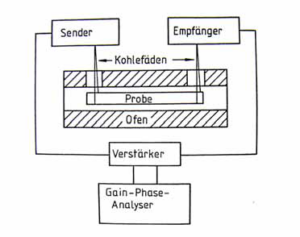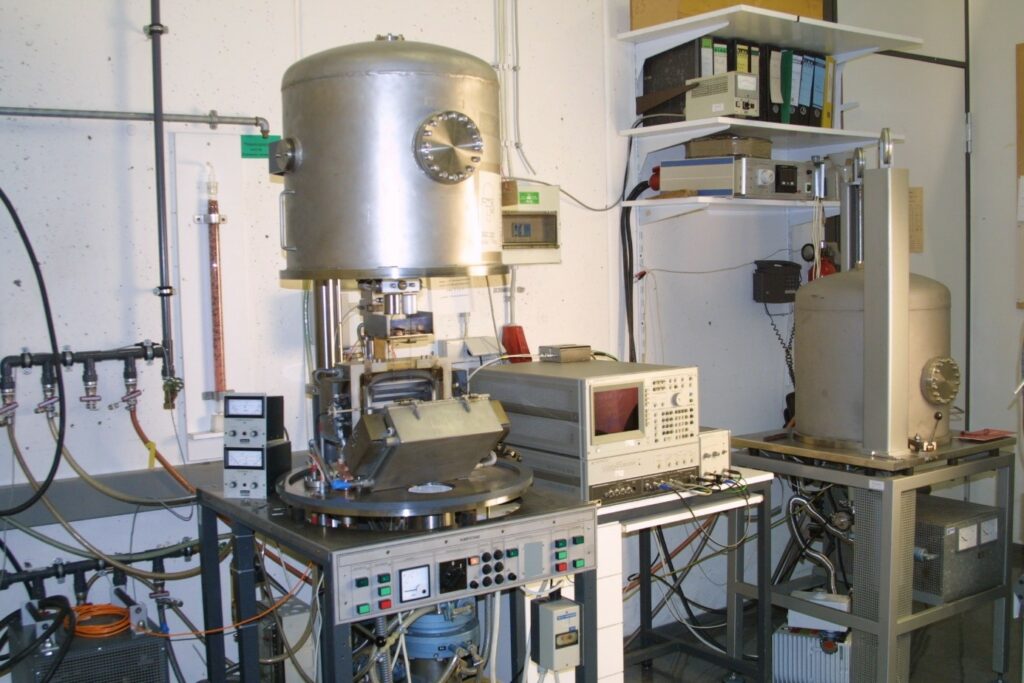E-Modulus measurement using the dynamic resonance method
Dynamic elastic properties are determined by means of the so-called dynamic resonance method. The test specimen is suspended in two carbon fibre loops in a test facility developed in-house, which has a vacuum chamber and an integrated oven. Via a piezo actuator, a mechanical vibration can now be introduced into the test specimen via one loop (transmitter). The other loop is used to record the vibrational response of the specimen. The frequency of the exciting vibration is varied and the corresponding vibration response of the specimen is recorded. The elastic characteristics of the specimen can then be determined from the measured resonant frequencies. The additionally attached heating chamber allows tests to be measured at temperatures up to 1100°C at constant ambient pressure and through the vacuum system without oxidation effect. The measurement is carried out by means of a Bode 100 network analyzer from Omicron Lab. Determined parameters are the modulus of elasticity, shear modulus as well as the transverse contraction number. These can be determined continuously from RT to high temperature. The measuring set-up is mainly used for metallic round bars or rolled sheet materials with a measuring length of usually 50 mm.


Responsible employees:
Nicolas Stein, M. Sc.
Department of Materials Science and Engineering
Chair of General Materials Properties
- Phone number: +49 9131 85-27478
- Email: nicolas.stein@fau.de
Annalena Meermeier, M. Sc.
Department of Materials Science and Engineering
Chair of General Materials Properties
- Phone number: +49 9131 85-27478
- Email: annalena.meermeier@fau.de